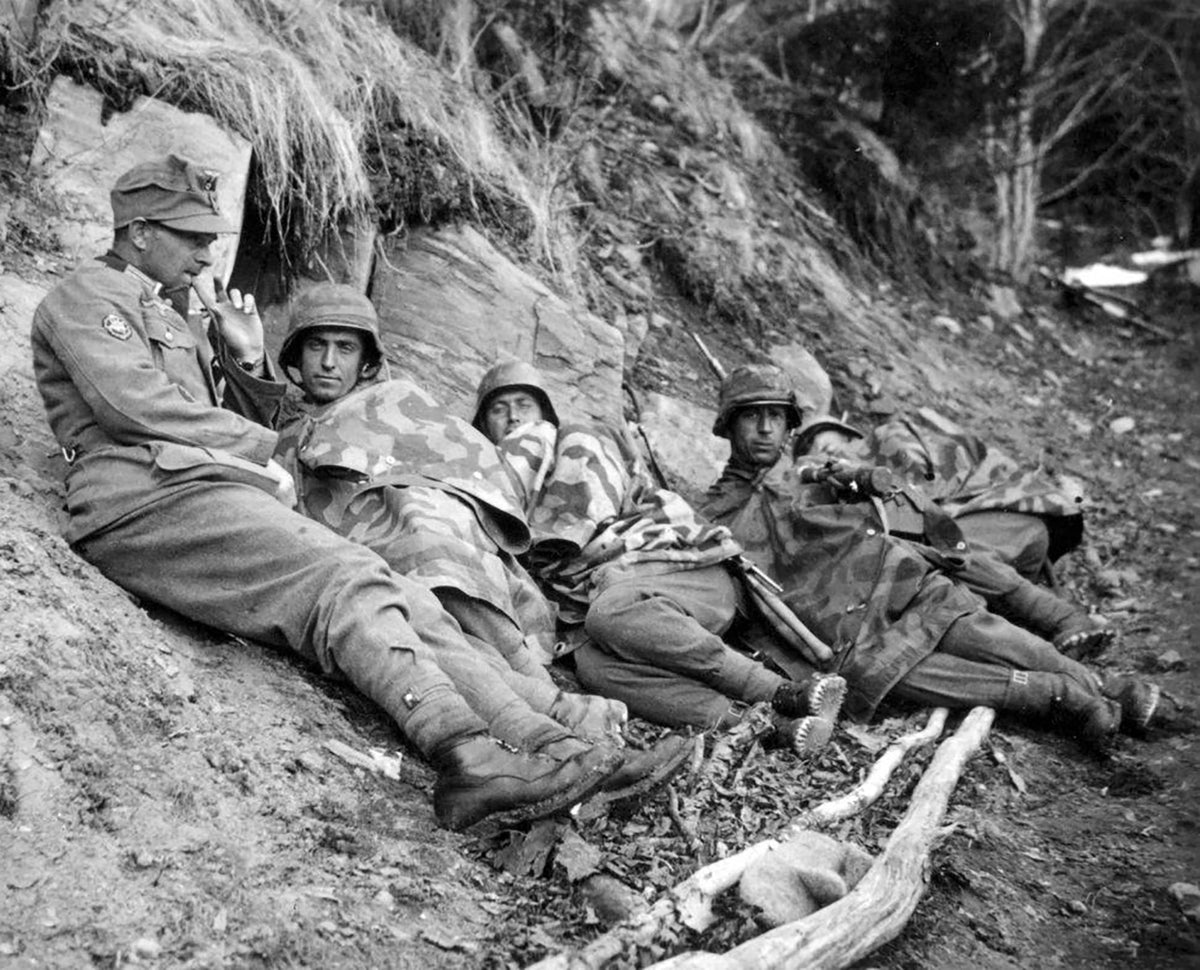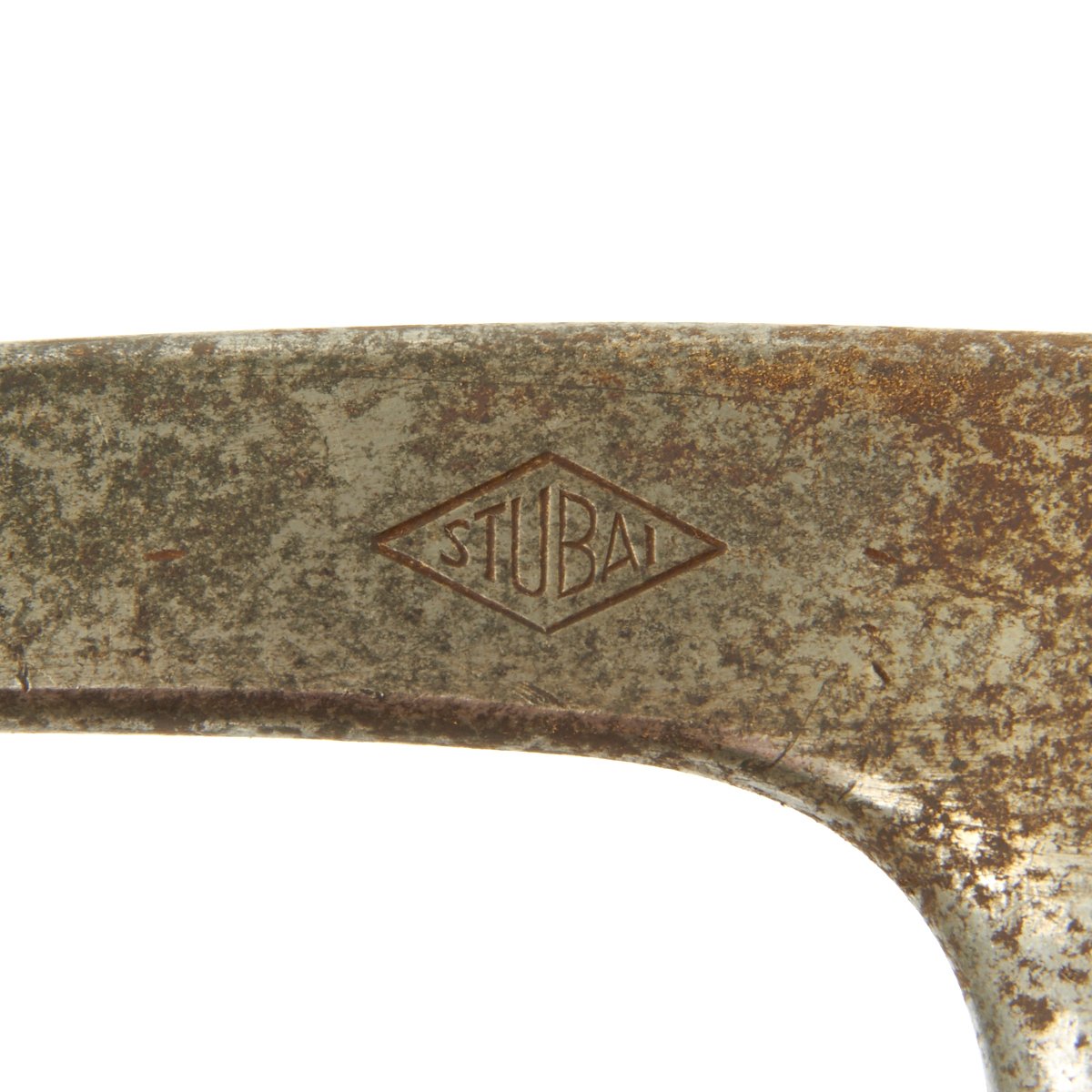Original German WWII 137th Mountain Hunters Regiment Ice Axe by STUBAI Original Items
$ 395,00 $ 118,50
Original Item: Only One Available. This is an excellent condition World War Two “Aschenbrenner” ice axe. The STUBAI logo on the axe is a pre-war or wartime logo. STUBAI stands for Stubai-Aschenbrenner Führerpickel, Ges. Gesch. “Himalaya” Peter Aschenbrenner was a famous Austrian mountaineer of the time and this ice axe was named after him. While technically this was a civilian ice axe, Aschenbrenner was a Heeresbergführer with the Gebirgsjägers during the war and this model ice axe is documented as having been used by the Gebirgsjägers.
This ice axe is offered in excellent condition. It measures 31″ in overall length with a 12″ head. The metal ring and cloth wrist strap are original and complete (so often missing). The STUBAI logo is clearly marked on the head. The haft itself is also marked:
This marking stands for Gebirgs-Jäger-Regiment 137. The 137th Mountain Hunters Regiment was a former regiment of the Wehrmacht that was part of the 2nd Mountain Division. The 137th Mountain Regiment were formed on the 1 August 1938 in the Wehrkreis XVIII. The regiment was the result of the merger between the 12th Infantry Regiment, 1st Carinthian Alpine Hunters Battalion and 3rd Austrian Alpine Hunters Battalion from the former Bundesheer. The regimental headquarters were stationed in Lienz in Wehrkreis XVIII, the 1st battalion was in Salzburg and the 2nd Battalion was in Spittal. Upon formation the regiment was subordinated to the new formed 2nd Mountain Division. Along with the movement a supplementary reserve battalion (replacement battalion) was formed known in Saalfeden.
Just after the German Mobilization in 1939 the regiment participated in the Polish Campaign. By the end of the year the regiment was stationed in the Lower Rhine Area. In 1940 the regiment was relocated along with the division to Norway where it would remain until the end of the war. Between 1941 and 1944 the regiment along with members of the Finnish Army fought against the Soviets in the Lapland War. In early 1945 the regiment moved to their home in Saarpfalz where it remained until the end of the war fighting off the Allies. Finally, In February 1945 the 201st Army Mountaineer Battalion was incorporated into the regiment.
By the end of the war each regiment was assigned a replacement battalion. The 137th Regiment had the Gebirgsjäger-Ersatz-Bataillon I./137 assigned to them.
Battles:
– Invasion of Poland
– Invasion of Norway
– Battle of Narvik
– Lapland War
– Operation Silver Fox
– Battle of Saar-Moselle Triangle
Fast Shipping with Professional Packaging
Thanks to our longstanding association with UPS FedEx DHL, and other major international carriers, we are able to provide a range of shipping options. Our warehouse staff is expertly trained and will wrap your products according to our exact and precise specifications. Prior to shipping, your goods will be thoroughly examined and securely secured. We ship to thousands clients each day across multiple countries. This shows how we're dedicated to be the largest retailer on the internet. Warehouses and distribution centres can be located throughout Europe as well as the USA.
Note: Orders with more than one item will be assigned a processing date depending on the item.
Before shipping before shipping, we'll conduct a thorough inspection of the items you have ordered. Today, the majority of orders will be delivered within 48 hours. The delivery time will be between 3-7 days.
Returns
The stock is dynamic and we cannot completely manage it because multiple stakeholders are involved, including our factory and warehouse. So the actual stock may alter at any time. It's possible that you may not receive your order once the order has been made.
Our policy is valid for a period of 30 days. If you don't receive the product within 30 days, we are not able to issue a refund or an exchange.
You can only return an item if it is unused and in the same state as the day you received it. You must have the item in its original packaging.
Related products
Uncategorized
Uncategorized
Armoured Fighting Vehicles of the World: AFVs of World War One (Hardcover Book) New Made Items
Uncategorized
Uncategorized
Uncategorized
Uncategorized
Uncategorized
Uncategorized
Uncategorized
Uncategorized
Uncategorized
Uncategorized
Uncategorized
Angolan Rebel 1970s era 60mm Inert Display Mortar from Angolan Civil War Original Items
Uncategorized
Uncategorized
Uncategorized
Uncategorized
Uncategorized












































































